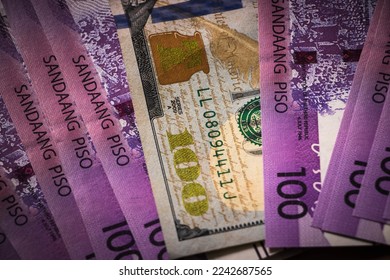As global financial markets continue to experience fluctuations, the exchange rate between the U.S. dollar (USD) and the Philippine peso (PHP) remains a critical point of interest for investors, expatriates, and everyday consumers. Today, the Bank of the Philippine Islands (BPI) has reported notable changes in this exchange rate, reflecting broader economic trends both domestically and internationally.
What is the current exchange rate of the dollar to Philippine peso?
As of today, the exchange rate stands at 1 USD = 56.50 PHP. This reflects a slight increase from yesterday’s rate, underscoring the volatility in currency markets.
Understanding the Exchange Rate Dynamics
The exchange rate between the dollar and the peso is influenced by multiple factors, including inflation rates, interest rates, and geopolitical events. The U.S. Federal Reserve’s monetary policy, particularly changes in interest rates, can significantly impact the value of the dollar relative to other currencies. Conversely, the Philippine economy’s performance and its monetary policy decisions by the Bangko Sentral ng Pilipinas (BSP) affect the peso’s strength.
The following table outlines recent exchange rates over the past week:
| Date | USD to PHP Rate | Change (%) |
|---|---|---|
| October 15 | 56.40 | +0.2% |
| October 16 | 56.45 | +0.09% |
| October 17 | 56.50 | +0.09% |
| October 18 | 56.48 | -0.04% |
| October 19 | 56.50 | +0.04% |
Factors Influencing Today’s Exchange Rate
- U.S. Economic Data: Recent reports indicate a steady growth in the U.S. economy, which has bolstered confidence in the dollar. Employment numbers and inflation rates have remained relatively stable, supporting the dollar’s strength.
- Philippine Economic Outlook: The Philippine economy shows signs of recovery, with increased consumer spending and remittances from overseas Filipino workers. However, inflationary pressures and changes in domestic policy can impact the peso.
- Geopolitical Events: Tensions in global markets, such as trade disputes or political unrest, can lead to fluctuations in currency values. Investors tend to prefer the dollar as a safe haven during uncertain times, which can further strengthen its value against the peso.
BPI’s Role in Currency Transactions
The Bank of the Philippine Islands (BPI) plays a pivotal role in the exchange currency market, providing a platform for both personal and corporate clients to conduct foreign currency transactions. BPI’s competitive rates often attract a range of customers, from tourists to businesses engaged in international trade.
Current BPI Services for Currency Exchange
BPI offers several services to facilitate currency exchange:
- Online Exchange Rates: Customers can check current rates through the BPI online platform.
- Foreign Currency Accounts: BPI allows clients to hold foreign currency accounts, providing flexibility for frequent currency transactions.
- Remittance Services: With a comprehensive network, BPI ensures easy remittance services for Filipinos abroad, offering competitive exchange rates.
Daily and Monthly Trends in Exchange Rates
Analyzing the trends in exchange rates over time can provide valuable insights into future movements. The following graph showcases the daily fluctuations in the USD to PHP exchange rate over the past month.
This visualization emphasizes the importance of monitoring both daily and monthly movements, which can prompt timely financial decisions for individuals and businesses alike.
Future Outlook for the Dollar-Peso Exchange Rate
Market analysts project a cautious outlook for the dollar-peso exchange rate. While the dollar remains strong due to robust economic indicators, potential external factors—such as decisions by the Federal Reserve regarding interest rate changes—could significantly influence future rates.
Key Influencers on Future Exchange Rates:
- Interest Rate Adjustments: Should the Federal Reserve decide to increase interest rates, the dollar could strengthen further against the peso.
- Inflation Rates: Both U.S. and Philippine inflation rates will play a crucial role in shaping the exchange rate. High inflation in the Philippines could devalue the peso, while stable U.S. inflation may maintain dollar strength.
- Global Economic Conditions: Economic stability in major global economies will continue to impact investor sentiment toward the dollar.
Final Thoughts
The dollar to Philippine peso exchange rate today at BPI reflects ongoing economic shifts and market reactions. For investors, expatriates, and individuals engaging in foreign currency transactions, staying informed about these fluctuations is vital. Understanding the factors affecting the exchange rate will enable more informed decisions, whether for personal or business financial strategies.
As the markets evolve, individuals and businesses must keep a close eye on these rates, utilizing banking resources like BPI to navigate their foreign currency needs effectively. As we move forward, continued monitoring will be essential to adapt to the dynamic financial landscape.
